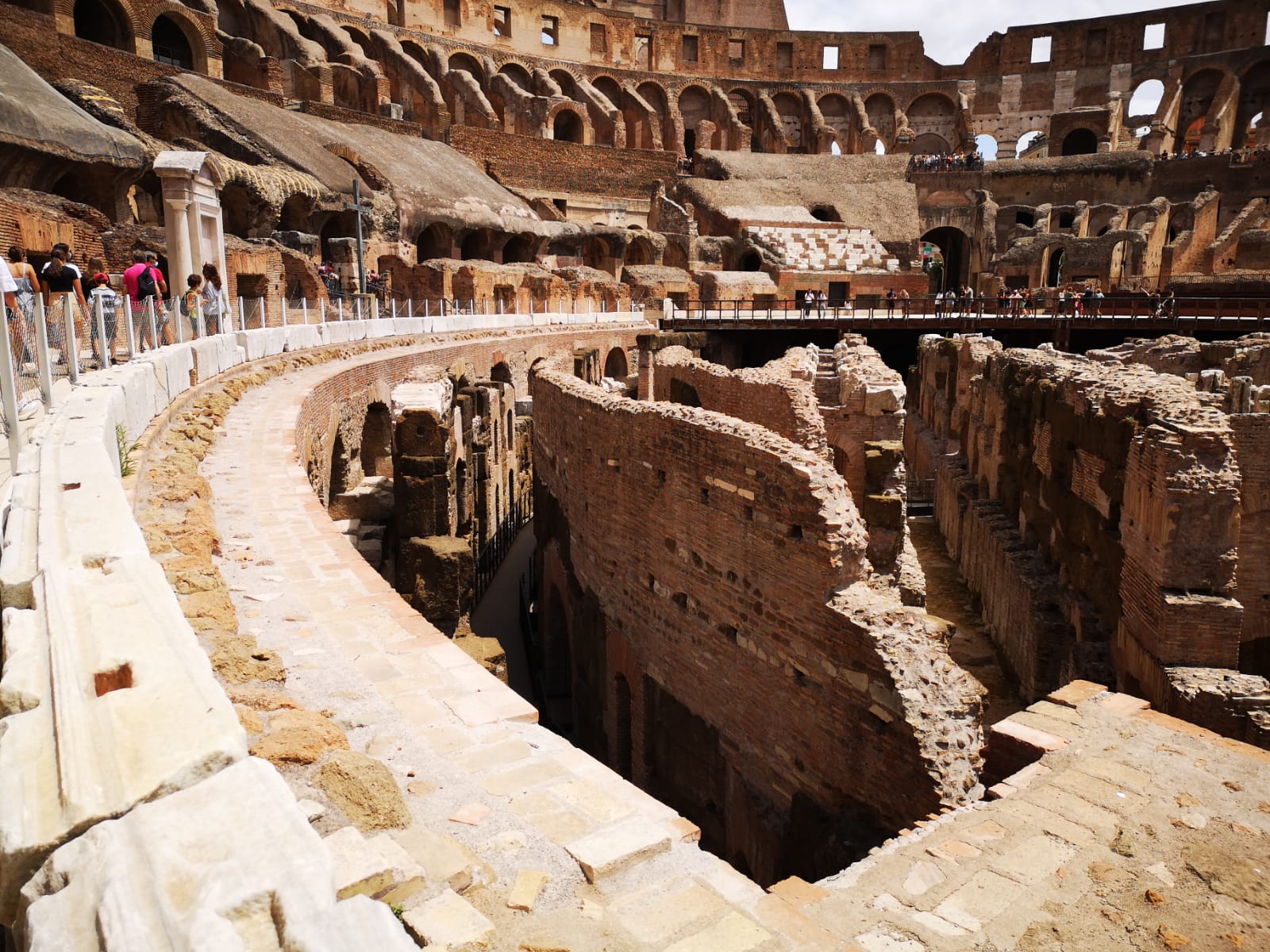The Heart of Roman Spectacle: The Hypogeum
The Colosseum, one of Rome’s most iconic landmarks, is renowned for its grandeur and engineering brilliance. However, beneath its imposing exterior lies a hidden world—the hypogeum, a complex underground system that was crucial to the amphitheater’s function. The hypogeum consisted of a network of tunnels, chambers, and lifts that allowed the dramatic and seamless staging of gladiatorial games, mock naval battles, and animal hunts, all of which defined the Colosseum’s role in Roman entertainment.

A Monument to Roman Engineering
Commissioned by Emperor Vespasian and completed by his son Titus in AD 80, the Colosseum was a grand symbol of the Flavian dynasty’s power. Yet, it was Emperor Domitian’s additions, including the hypogeum, that truly transformed the venue into a sophisticated entertainment complex. The underground chambers housed gladiators, wild animals, and theatrical props, while complex machinery like trapdoors and elevators added an element of surprise and drama to the events above.

Innovation Below Ground
The hypogeum’s design was revolutionary for its time. A two-level network of tunnels and cells, it enabled rapid and precise movement of people and animals during events. The underground system’s use of elevators and trapdoors to lift gladiators, animals, and props into the arena was a technical marvel. These innovations allowed for smooth transitions between different spectacles, from gladiatorial battles to exotic animal hunts, enhancing the audience’s experience with unexpected moments.

Beneath the Arena: The Engine of Spectacle
The Colosseum’s public spectacles were a multifaceted experience, and the hypogeum played a pivotal role in their execution. Beneath the arena, slaves, workers, and animals were carefully managed to create the illusion of spontaneous drama above. The underground space featured holding pens for animals, as well as mechanisms to simulate natural environments like forests or deserts, intensifying the realism of the performances.

Uncovering the Secrets: Modern Discoveries
Recent archaeological excavations have shed light on the hypogeum’s hidden mechanisms. Restorations have opened parts of the underground system to the public, revealing detailed insights into the engineering genius that powered these ancient performances. Inscriptions, animal bones, and remnants of machinery provide a glimpse into the complexities of running the Colosseum’s grand spectacles.

A Testament to Roman Ingenuity
The Colosseum’s hypogeum is a testament to Roman engineering ingenuity. The ability to manipulate the arena’s surface and manage such large-scale events with precise choreography showcases the sophistication of ancient Roman technology. As a UNESCO World Heritage Site, the Colosseum remains a lasting symbol of Rome’s engineering prowess and a cultural treasure that continues to inspire awe and admiration.
The hypogeum, often overshadowed by the Colosseum’s above-ground grandeur, reveals the complexity and innovation that made this ancient arena one of the most remarkable structures of the ancient world.

